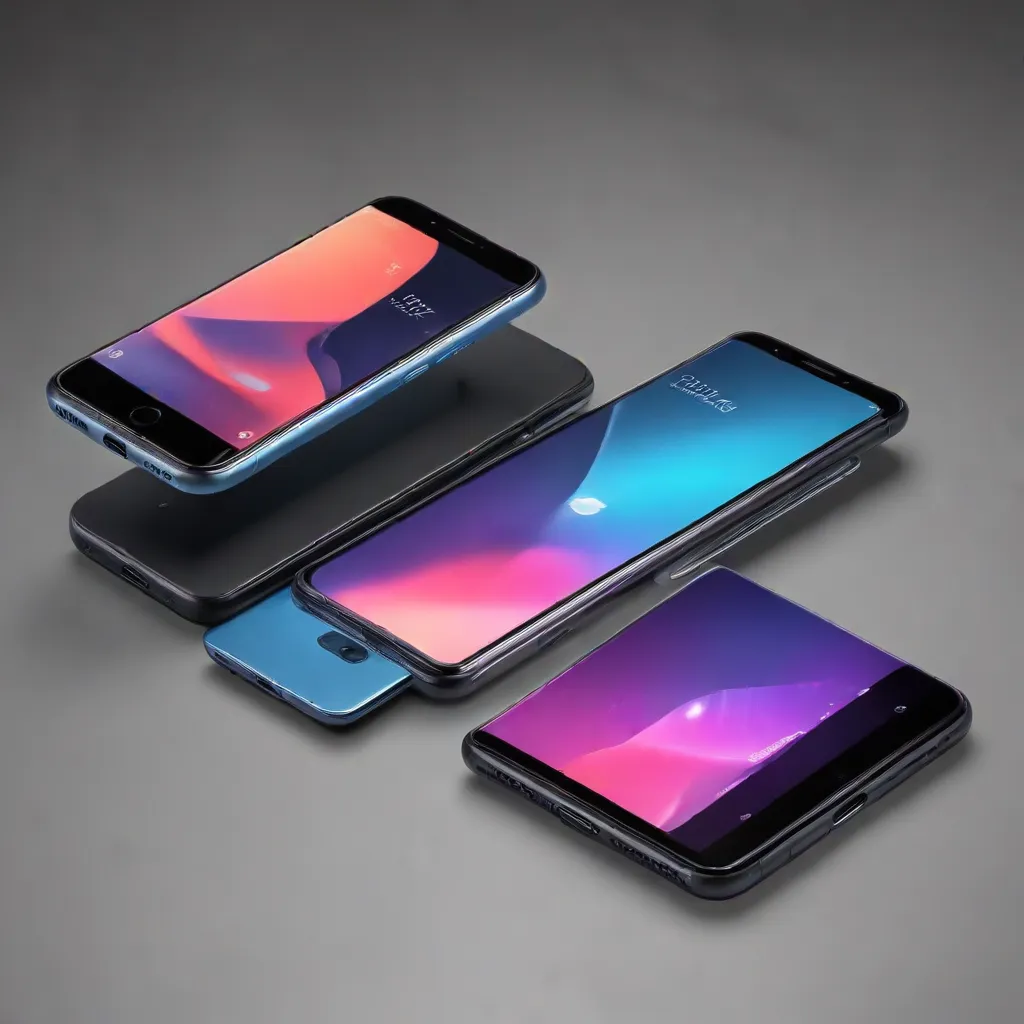
The Evolving Landscape of Mobile Device Innovation
As an experienced IT professional, I’ve witnessed the rapid advancements in smartphone technology over the years. The once-simple mobile devices have transformed into powerful, feature-rich companions that have become an integral part of our daily lives. But the evolution of smartphone design is far from over. In the coming years, we can expect to see some truly exciting and innovative trends that will reshape the way we interact with our mobile devices.
Minimalistic Design and Dark Mode Dominance
One of the most prominent trends in smartphone design is the continued push towards minimalism. Users are increasingly drawn to clean, uncluttered interfaces that prioritize simplicity and ease of use. With limited screen real estate on mobile devices, designers are focusing on stripping away unnecessary elements and ensuring that the essential features are easily accessible. This minimalist approach not only looks modern and visually appealing but also enhances usability by reducing cognitive load and improving navigation.
Alongside the minimalist trend, we can expect dark mode to become a standard feature across a wide range of mobile apps. This sleek, dark-themed design not only looks aesthetically pleasing but also offers practical benefits, such as reduced eye strain and potential battery savings on OLED displays. Many popular apps, such as Instagram and Google, have already embraced dark mode, and we’re likely to see more developers follow suit in the future.
Gesture-Based Navigation and Voice Interactions
As smartphone designs evolve, we’re also witnessing a shift towards more intuitive and seamless methods of interaction. With the rise of bezel-less and foldable devices, gesture-based navigation is becoming increasingly prevalent. Replacing traditional buttons and menus with natural gestures can provide a more engaging and immersive user experience.
Guiding users through innovative gestures will be a key focus for designers, as they strive to make navigation effortless and intuitive. Apple and Android have already established their own gesture-based systems, and we can expect to see more developers explore creative ways to enhance the gestural experience in mobile apps.
In addition to gesture-based interactions, voice assistants and voice-enabled devices are also poised to play a significant role in the future of smartphone design. With the growing popularity of voice-first technology, mobile app designers will prioritize voice-first interactions, allowing users to perform tasks, search for information, and control the app using natural language commands. This integration of voice-based controls can greatly improve accessibility and convenience for users.
Personalization and Adaptive Experiences
As users’ expectations continue to evolve, the importance of personalization in smartphone design will only increase. Designers will leverage advanced algorithms and artificial intelligence to analyze user behavior, preferences, and context, delivering highly personalized experiences tailored to each individual’s needs.
This could involve dynamic interfaces that adapt to user preferences, content recommendations based on past interactions, and even the ability to customize the overall appearance of the device. By creating these personalized experiences, mobile apps can foster deeper engagement, enhance user satisfaction, and ultimately drive long-term loyalty.
Immersive AR and VR Experiences
The rapid advancements in augmented reality (AR) and virtual reality (VR) technologies present exciting opportunities for smartphone design. As these technologies become more accessible and integrated, mobile app developers will explore innovative ways to create immersive and interactive user experiences.
From AR overlays in retail apps that allow users to visualize products in their own environments to VR-driven gaming and training applications, the integration of AR and VR can transform the way we interact with our mobile devices. The success of apps like Pokémon GO, which introduced AR to the mainstream, is a testament to the potential of these emerging technologies in the mobile space.
Sophisticated Data Visualization and Microinteractions
As mobile devices continue to evolve, the way we consume and interact with data will also undergo significant changes. Data visualization in mobile apps will become more sophisticated and interactive, with the integration of augmented data visualization techniques. Users will be able to explore complex datasets in real-time, gaining valuable insights and making more informed decisions.
Complementing these data-driven experiences, the use of microinteractions and subtle animations will enhance user engagement and provide valuable feedback. Microinteractions, such as the small shaking effect when entering an incorrect password or the floating dots indicating that someone is typing, can create a delightful and responsive user experience that keeps users engaged and entertained.
The Future of Smartphone Design: Merging Innovation and User Needs
The future of smartphone design is brimming with exciting possibilities. From minimalist and clean interfaces to immersive AR and VR experiences, the landscape is constantly evolving to meet the changing needs and expectations of users. By embracing these emerging trends and predictions, designers and developers can craft mobile devices that captivate audiences, drive engagement, and shape the future of digital experiences.
At IT Fix, we’re dedicated to staying at the forefront of technological advancements and providing our readers with practical insights and valuable information. As an experienced IT professional, I’m excited to see how the smartphone design landscape will continue to evolve, and I’m confident that the trends we’ve discussed will play a crucial role in shaping the future of mobile technology.
By incorporating minimalism, dark mode, gesture-based navigation, voice interactions, personalization, AR/VR integration, and sophisticated data visualization, the mobile devices of tomorrow will offer a seamless and engaging user experience. Staying ahead of the curve in this dynamic field is essential for success in the ever-evolving world of smartphone design.
Whether you’re an IT enthusiast, a tech-savvy consumer, or a mobile app developer, understanding these exciting trends will help you navigate the future of smartphone design and unlock the full potential of your mobile devices. Keep an eye on the latest developments, and get ready to experience the future of smartphone innovation.












